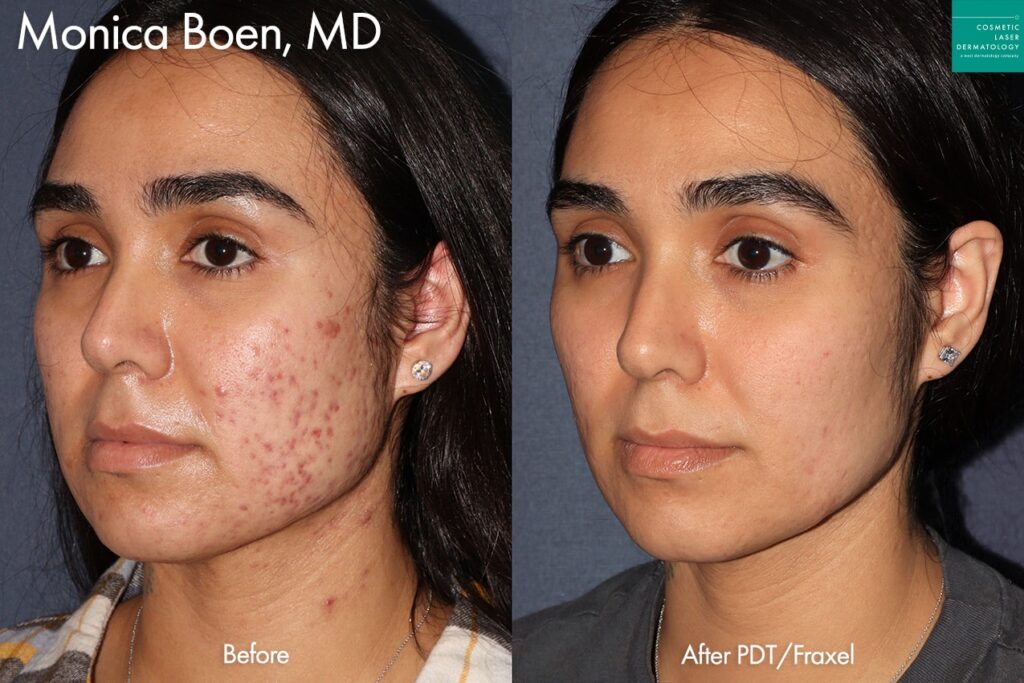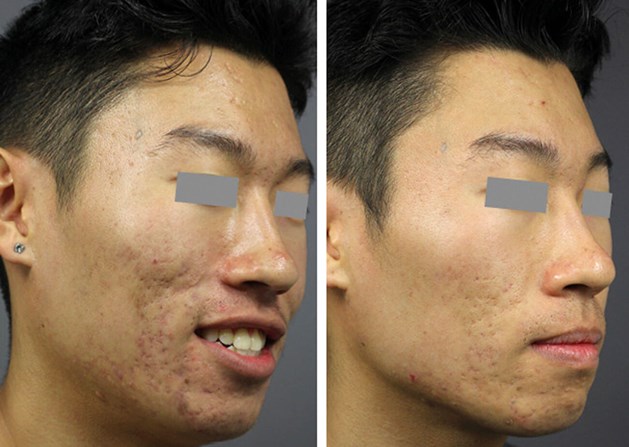Top Acne Treatment for Sensitive Skin: Mild Solutions for Clear Skin
Top Acne Treatment for Sensitive Skin: Mild Solutions for Clear Skin
Blog Article
Comprehending the Numerous Skin Disease and Effective Therapy Alternatives for Acne Marks
Acne scars stand for a complex interaction of skin disease that significantly impact individuals' self-confidence and general skin health. Comprehending the distinct kinds of acne marks-- hypertrophic and atrophic-- together with their underlying causes, is critical for figuring out efficient treatment methods. Different restorative choices exist, ranging from sophisticated skin-related treatments to natural remedies. The efficiency of these treatments frequently pivots on individualized analyses by certified professionals. As we check out the landscape of acne mark administration, it ends up being apparent that the journey towards more clear skin might include even more than simply topical remedies.
Sorts Of Acne Marks

In contrast, hypertrophic marks arise from an overflow of collagen during the recovery process, resulting in raised areas on the skin. These marks are commonly firm and can vary in shade, in some cases showing up red or darker than the surrounding skin.
Recognizing these sorts of acne scars is critical for developing an efficient therapy plan - acne scars. Options might include chemical peels, laser therapy, microneedling, or dermal fillers, customized to the specific mark type. An extensive assessment with a skin specialist can assist figure out one of the most ideal intervention, thinking about the individual's skin type, mark severity, and general skin health and wellness
Causes of Acne Scarring
Scarring occurs as an outcome of the body's natural healing feedback to swelling and injury created by acne lesions. When acne forms, it triggers an inflammatory action, causing the release of numerous cytokines and development variables that advertise recovery. Nevertheless, this process can in some cases result in too much tissue formation or insufficient repair service, leading to scars.
The key root causes of acne scarring consist of the severity of the acne itself, duration of the lesions, and individual skin kinds. Extreme inflammatory acne, such as cysts and nodules, is more probable to cause scarring as a result of much deeper tissue damage. In addition, inappropriate handling of acne lesions, such as pressing or selecting, can aggravate cells injury and swelling, enhancing the possibility of scarring.
Genetic predisposition likewise plays a considerable duty; people with a household background of scarring go to a greater risk. Skin kind and shade can influence mark formation, as darker skin tones may experience post-inflammatory hyperpigmentation, while lighter skin might establish atrophic scars.
Inevitably, understanding these reasons is crucial in managing acne and alleviating the possibility for scarring.

Treatment Choices for Scarring
Reliable treatment options for acne scarring vary relying on the kind and intensity of the scars. Typically categorized into atrophic, hypertrophic, and keloid scars, these conditions call for tailored approaches for optimum outcomes.
For atrophic marks, which are characterized by a loss of cells, therapies such as chemical peels, microdermabrasion, and laser therapy are commonly used. These techniques promote skin revival and promote collagen manufacturing, consequently improving skin structure. Subcision, a minimally invasive treatment, can also work by damaging up fibrous bands beneath the skin.
Hypertrophic and keloid scars can be extra challenging to deal with. Choices include corticosteroid shots to decrease swelling and flatten the marks. In some cases, cryotherapy or laser treatment might be suggested to minimize their look.
Surgical alternatives are offered for severe scarring, where excision or skin grafting might be needed. It's necessary for individuals to seek advice from with a dermatologist to analyze their certain scar kind and discuss the most ideal treatment plan. Incorporating multiple therapies usually generates the best results, guaranteeing that each person's unique skin disease is addressed efficiently.
Natural Home Remedy and All-natural Solutions
All-natural services and home treatments can provide an obtainable approach for individuals seeking to enhance the appearance of acne scars (skin rejuvenation treatments). Various components discovered in the home kitchen area have actually demonstrated prospective benefits in improving skin structure and advertising recovery

An additional reliable choice is lemon juice, which serves as a natural exfoliant and can lighten hyperpigmentation. However, it needs to be used cautiously, as it might trigger photosensitivity. Oat meal masks are also beneficial; their gentle peeling can help get rid of dead skin cells while relaxing irritability.
Necessary oils, such as tea tree oil and lavender oil, can additionally support mark healing as a result of their antimicrobial residential or commercial properties. It is crucial to execute a spot examination before applying any remedy to make certain there are no negative responses. These all-natural solutions can be a complementary method in the journey to reduce acne scars.
Protecting Against Future Scarring
Taking on a positive method to skincare can substantially reduce the threat of establishing future acne marks. One of the key strategies is to handle acne efficiently as it arises. This involves using non-comedogenic skincare products and medications suggested by skin specialists that target acne without irritating the skin. Regular cleansing, peeling, and hydration can aid preserve skin health and wellness and prevent stopped up pores.
In addition, preventing the lure to press or select acne sores is critical, as this can lead to inflammation and succeeding scarring. Rather, individuals should concentrate on using topical therapies that advertise healing and decrease inflammation. Components such as salicylic acid, read this article benzoyl peroxide, and retinoids are recognized for their efficacy in handling acne and lessening scars.
Sun security is an additional vital component; exposure to UV rays can impede and darken marks recovery. Using a broad-spectrum sunscreen daily can reduce these impacts.
Lastly, maintaining a healthy and balanced diet rich in antioxidants and remaining hydrated supports skin regeneration. By carrying out these precautionary procedures, people can significantly reduce their danger of future scarring and see this site promote overall skin health and wellness.
Conclusion
Finally, a comprehensive understanding of acne marks, including both hypertrophic and atrophic types, is vital for reliable treatment approaches. Customized interventions, consisting of specialist therapies and home treatments, can significantly enhance skin look and appearance. Safety nets also play a crucial role in decreasing future scarring. Appointment with a skin specialist continues to be imperative to create customized strategies that consider individual skin kinds and scar extent, inevitably boosting the efficiency of scar monitoring techniques.
Acne marks stand for an intricate interplay of skin problems that considerably influence individuals' self-worth and general skin health. The 2 main groups of acne scars are atrophic and hypertrophic scars. These marks are further classified into 3 subtypes: ice choice scars, which are deep and narrow; boxcar scars, which are bigger and have distinct edges; and rolling scars, which create a wave-like look due to unequal skin appearance.
A detailed examination basics with a skin doctor can assist establish the most ideal intervention, taking into account the person's skin type, mark severity, and total skin health.
Examination with a dermatologist continues to be necessary to create tailored methods that consider specific skin types and mark intensity, eventually improving the effectiveness of mark administration strategies.
Report this page